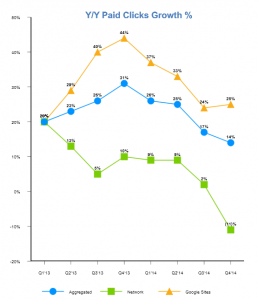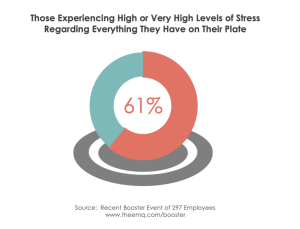— February 21, 2018

real-napster / Pixabay
For a long time, digital marketers summed up the properties of direct and organic traffic pretty similarly and simply. To most, organic traffic consists of visits from search engines, while direct traffic is made up of visits from people entering your company URL into their browser. This explanation, however, is too simplified and leaves most digital marketers short-handed when it comes to completely understanding and gaining insights from web traffic, especially organic and direct sources.
Beyond organic and direct traffic, you must understand the difference between all of your traffic sources and how traffic is classified. Most web analytics platforms, like Google Analytics, utilize an algorithm and flow chart based on the referring website or parameters set within the URL that determine the source of traffic. Here is a breakdown of all sources:
- Referral: Traffic that occurs when a user finds you through a site other than a major search engine
- Social: Traffic from a social network, such as Facebook, LinkedIn, Twitter, or Instagram
- Organic: Traffic from search engine results that is earned, not paid
- Paid search: Traffic from search engine results that is the result of paid advertising via Google AdWords or another paid search platform
- Email: Traffic from email marketing that has been properly tagged with an email parameter
- Other: If traffic does not fit into another source or has been tagged as “Other” via a URL parameter, it will be bucketed into “Other” traffic.
- Direct: Any traffic where the referrer or source is unknown.
Now that we have a general basis for all traffic sources, let’s dig into the specifics of two very important sources: direct and organic traffic.
Direct Traffic
Direct traffic is defined as visits with no referring website. When a visitor follows a link from one website to another, the site of origin is considered the referrer. These sites can be search engines, social media, blogs, or other websites that have links to other websites. Direct traffic categorizes visits that do not come from a referring URL.
Traditionally, we’ve attributed these visitors to manually entering the URL of the website or click on a bookmarked link. Today, however, the story behind direct traffic is a bit more complex, and the number of visits from direct traffic seems to be growing for many websites, especially sites with growing organic traffic.
To test this theory, back in 2014, Groupon ran a test in which it de-indexed its site for six hours. When Groupon did this, it was able to conclude that 60 percent of direct traffic was actually organic because de-indexing its site and halting organic traffic also dropped its direct traffic.
Why are more sites seeing direct traffic growth, and what should you do about it?
Let’s dig into the common causes of direct source traffic to find the answer:
- Internal employees: Your employees commonly visit your site and do not have their IP filtered from web analytics. As a rule of thumb, filter out all company IPs from web analytics.
- Customers: Do your customers log into a customer portal on your site? This is often a culprit within direct traffic. In this case, you do not want to completely filter out the traffic, but instead set up different views within Google Analytics to view web analytics without this traffic.
- Actual direct traffic: These are the people who enter your URL into their browser or find you via a bookmark. There’s nothing you can do to dig deeper on this—just embrace the fact that users actually know your brand.
- Emails from particular email clients: It’s quite common for email clicks from Outlook or Thunderbird to not pass on referring information. You can typically identify whether an email caused a spike in direct traffic by analyzing traffic around the time a particular email was sent.
- Mobile traffic: In the Groupon experiment mentioned above, Groupon found that both browser and device matter in web analytics’ ability to track organic traffic. Although desktops using common browsers saw a smaller impact from the test (10-20 percent), mobile devices saw a 50 percent drop in direct traffic when the site was de-indexed. In short, as mobile users grow, we are likely to see direct traffic rise even more from organic search traffic.
- Clicks on mobile apps or desktop softwares: Programs such as Skype or news apps often do not pass referring information and result in direct traffic. The best way to capture and analyze this further is to understand where your site links might be commonly used or placed digitally, including apps.
- Secure (https) to non-secure sites (http): Since Google began emphasizing the importance of having a secure site, more websites are securely hosted, as indicated by the “https” in their URLs. Per the security protocol, however, any traffic going from a secure site to a non-secure site will not pass referral information. For this issue, you can correct by updating your site to be secure through a third-party SSL certificate.
When you look at your overall traffic, a healthy amount of direct traffic is about 20 percent, according to web analytics pro Avinash Kaushik. However, with major web shifts that are disabling marketers from tracking the true source of traffic, it is likely we will see this percentage rise. Now, what about organic traffic?
Organic Traffic
Organic traffic is the primary channel that inbound marketing strives to increase. This traffic is defined as visitors coming from a search engine, such as Google or Bing. This does not include paid search ads, but that doesn’t mean that organic traffic isn’t impacted by paid search or display advertising, either positively or negatively. In general, people trust search engines, and sayings such as “just Google it” reinforce that humans are tied to the search engine. Thus, paid search, display, or even offline campaigns can drive searches, which may increase organic traffic while those campaigns are running.
That said, we also know that organic search traffic as a whole has been negatively impacted by the layout changes Google made to search results last year, which caused some websites such as Wayfair to see 25 percent of click share on desktop and 55 percent on mobile be lost to paid search results.
To sum up all of this information, even organic traffic, like direct traffic, has some gray areas. For the most part, though, organic traffic is driven by SEO. The better you are ranking for competitive keywords, the more organic traffic will result. Websites that consistently create content optimized for search will see a steady increase in organic search traffic and improved positioning in the search results. As a marketer, it is important to look at your keywords and high-ranking pages to identify new SEO opportunities each month.
Traffic data is a great way to take the temperature of your website and marketing initiatives. When you are writing and promoting blog content on a regular basis, you can use traffic data to track results and correlate these efforts to actual ROI. Be sure to look at traffic numbers over long-term intervals to see trends and report on improvement over time.
Digital & Social Articles on Business 2 Community
(612)
Report Post





